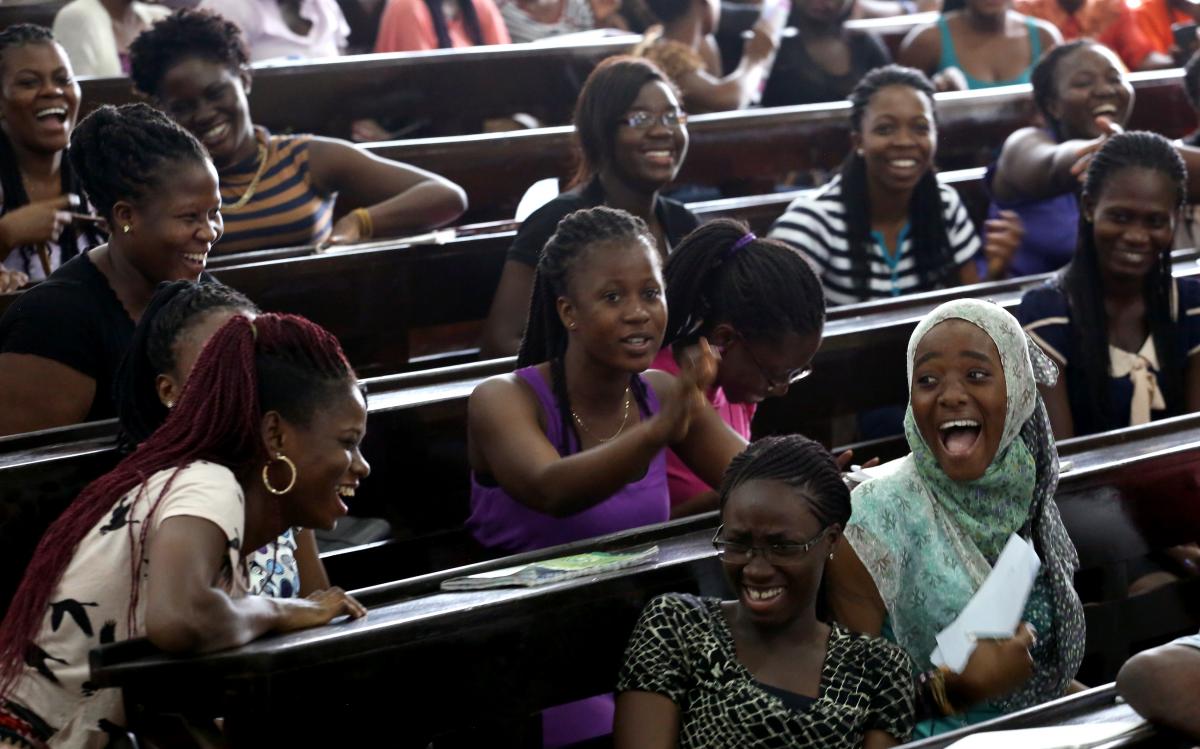
Image: World Bank Photo Collection, Openverse (CC BY-NC-ND 2.0)
The United Nations (UN) set out the Sustainable Development Goals (SDGs) in 2015. SDG 4 concerns “inclusive and equitable quality education.”[1] While there have been a number of proposals[2], it is not clear the extent to which Open Education or OER are assisting with achieving the goal, so the International Day of Education may provide a focal point for associating SDG 4 with the open education movement. The UN designates specific days, weeks, years, and decades as occasions to mark particular events or topics to promote the objectives of the organization. Since 2019, the UN’s educational arm (UNESCO) has celebrated the International Day of Education on 24 January. This, year the theme is “to invest in people, prioritize education.”
This year’s Day will call for maintaining strong political mobilization around education and chart the way to translate commitments and global initiatives into action… Education must be prioritized to accelerate progress towards all the Sustainable Development Goals against the backdrop of a global recession, growing inequalities and the climate crisis.[3]
The concept note for the International Day of Education builds on the UN Transforming Education Summit held in September 2022. It calls for strong political mobilization around education to translate commitments and global initiatives into action. The critical areas highlighted are
- Foundational learning;
- The green and digital transitions;
- Gender equality;
- Education in crisis; and
- Financing.
How do these fit with OER and the UNESCO OER Recommendation that we discussed in March 2022? While the International Day of Education does not specifically link to OER, we note that the day provides an opportunity to showcase OER within each of the critical areas, or create OER where they are not available. The concept note stresses the need to capacitate policy makers, teachers and educators to make education transformative, while one of the OER Recommendation’s areas of action is to build stakeholder capacity, as we highlight below. Here, we briefly examine each of the critical areas from the UN Transforming Education Summit, to show how OER and other available resources can help with operationalising the Recommendation.
- First, a key to foundational learning is literacy. The UNESCO concept note states that “six out of 10 children cannot read and understand a simple story at age 10.” Open licensing is crucial in enabling children to both learn to read and practice reading, as it provides freely accessible and downloadable resources in contexts where they may be none. The African Storybook initiative provides open access picture storybooks in the languages of Africa, while the Early Literacy Resource Network gives access to high-quality books and learning resources in multiple languages.
- The Commonwealth of Learning (CoL) assists learning institutions at all levels to transition to digital learning with their Technology-Enabled Learning initiative. CoL is also at the forefront of green education, as can be seen in its video on Promoting Learning for Sustainable Development. CoL’s policy is that all of its resources are openly licensed.
- The OER Africa post in November 2022 provided instances on how gender intersects with open resources, such as Girls Can Code Initiative, Girl Code Africa, and the Women of Uganda Network (WOUGNET). A Practice Guidance note on gender equality is available here, while Oxfam has produced a book on the subject with practical examples.
- Ideas around education during emergencies and crises have been prevalent even before the shutdowns of 2020 and 2021. Useful openly licensed resources can be found at education in emergencies and protracted crises. Particularly useful from an educational technology standpoint is the rapid evidence review on Education in Emergencies that summarises best practices on access to education, content, support and psychosocial well-being.
- For the critical areas above, the financing of education is crucial. UNESCO has produced an education simulation model to assist sectors to make the best decisions on how to finance education. The World Bank is the largest financier of education in the developing world, so understanding its priorities is important for anyone involved in educational finance.
To operationalise the UNESCO OER Recommendation’s area of action to build capacity of stakeholders to create, access, re-use, adapt and redistribute OER, it is necessary to
- Build awareness regarding the usefulness of OER.
- Capacitate educators at all levels to create, re-use, adapt, and redistribute OER.
- Raise awareness regarding the advantages of Open Access works.
- Make OER widely accessible and findable in appropriate repositories.
- Promote digital literacy skills to enable users to develop, access and adapt OER.
OER Africa, in its association with the African Library and Information Associations and Institutions (AfLIA), the Association of African Universities (AAU), and selected universities on the continent, is building capacity of their members in accordance with the OER Recommendation, so that the ideals of the International Day of Education and the Sustainable Development Goals can be realised. We would welcome hearing from any interested persons who are working along similar lines; our email address is info saide [dot] org [dot] za (info[at]saide[dot]org[dot]za)
saide [dot] org [dot] za (info[at]saide[dot]org[dot]za)
Related articles:
- The UNESCO OER Recommendation and effective, inclusive, equitable access to quality OER
- International Literacy Day 2022: ‘Transforming Literacy Learning Spaces’
- International Youth Day: Open learning as a driver to realising the Sustainable Development Goals?
[3] UNESCO. (2023). International Day of Education. Retrieved from https://en.unesco.org/sites/default/files/education_day_2023-cn-en.pdf
